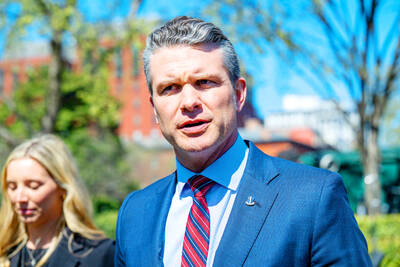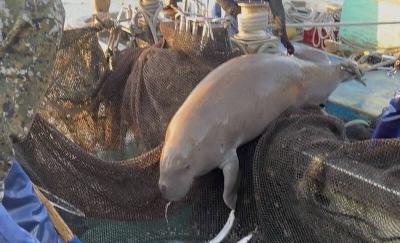The nation's first biomedical science park was officially established yesterday in Hsinchu County with President Chen Shui-bian (
"In the past, the development of Taiwan's information technology industry was an economic miracle. Now, the biomedical industry will also be a miracle," Chen said, expressing that the biomedical industry would open doors to profitable investment opportunities.
While Chen called the founding of the Hsinchu Biomedical Science Park a symbol of Taiwan's participation in the biomedical industry, construction on the park is not scheduled to begin until next year. It is slated to be completed and to begin operations in 2008, in keeping with the "Challenge 2008" national development project.
"Environmental impact assessments will be performed at the beginning of next year. Construction on public infrastructure will begin thereafter," confirmed Hsu Su-ming (
According to Hsu, the 38.3 hectare park will be the home of public infrastructure projects such as a general hospital, as well as private businesses and research facilities.
One of the core facilities of the park will be the National Taiwan University Medical Center, which will include the general hospital.
Construction on the hospital, a facility large enough to accommodate up to 700 patients, is expected to be completed by 2006, ahead of the park's completion.
According to Masaru Itani, chief executive officer of Nihon Sekkei, which has been commissioned to develop an overall plan for the park's infrastructure, the hospital's facilities will emphasize the treatment of cardiovascular diseases, the nation's leading cause of death. The hospital will also be used as a center for bedside research.
The medical center will also feature a Cancer and Proton Therapy Center.
Chen Wei-Jae (
The park plans to bring in as much as NT$42.3 billion in investments by 2025.
While Hsu refrained from giving details as to the businesses that had expressed interest in joining the park, he commented that the issue was "delicate."
"If we let on that many companies are interested in investing, we face the problem of pressure from China," Hsu said, expressing that construction of public infrastructure would commence first, followed by private businesses.
"We're looking mostly to attract investors from abroad to the park. So far, they've said that the park's main advantages are Taiwan's talent pool and high quality medical resources," Hsu said.
He said that many investors would probably choose to set research and development headquarters in Taiwan while establishing manufacturing facilities in China.
The National Science Council also yesterday officially handed over the tasks of planning, constructing and operating the park to NTU amidst concerns from academia that the park's development will only benefit the university.
The park's official logo was also revealed for the first time yesterday. The green logo features a triangular figure with a superimposed image of bamboo leaves to symbolize Hsinchu, and the yin-yang symbol to indicate harmony.
According to park representatives, the logo represents vitality, health and regeneration.The park is strategically located in the government's planned development zone next to the Hsinchu station of the high-speed railway.

‘DENIAL DEFENSE’: The US would increase its military presence with uncrewed ships, and submarines, while boosting defense in the Indo-Pacific, a Pete Hegseth memo said The US is reorienting its military strategy to focus primarily on deterring a potential Chinese invasion of Taiwan, a memo signed by US Secretary of Defense Pete Hegseth showed. The memo also called on Taiwan to increase its defense spending. The document, known as the “Interim National Defense Strategic Guidance,” was distributed this month and detailed the national defense plans of US President Donald Trump’s administration, an article in the Washington Post said on Saturday. It outlines how the US can prepare for a potential war with China and defend itself from threats in the “near abroad,” including Greenland and the Panama

A wild live dugong was found in Taiwan for the first time in 88 years, after it was accidentally caught by a fisher’s net on Tuesday in Yilan County’s Fenniaolin (粉鳥林). This is the first sighting of the species in Taiwan since 1937, having already been considered “extinct” in the country and considered as “vulnerable” by the International Union for Conservation of Nature. A fisher surnamed Chen (陳) went to Fenniaolin to collect the fish in his netting, but instead caught a 3m long, 500kg dugong. The fisher released the animal back into the wild, not realizing it was an endangered species at

The High Prosecutors’ Office yesterday withdrew an appeal against the acquittal of a former bank manager 22 years after his death, marking Taiwan’s first instance of prosecutors rendering posthumous justice to a wrongfully convicted defendant. Chu Ching-en (諸慶恩) — formerly a manager at the Taipei branch of BNP Paribas — was in 1999 accused by Weng Mao-chung (翁茂鍾), then-president of Chia Her Industrial Co, of forging a request for a fixed deposit of US$10 million by I-Hwa Industrial Co, a subsidiary of Chia Her, which was used as collateral. Chu was ruled not guilty in the first trial, but was found guilty

The Chinese Nationalist Party (KMT) is maintaining close ties with Beijing, the Democratic Progressive Party (DPP) said yesterday, hours after a new round of Chinese military drills in the Taiwan Strait began. Political parties in a democracy have a responsibility to be loyal to the nation and defend its sovereignty, DPP spokesman Justin Wu (吳崢) told a news conference in Taipei. His comments came hours after Beijing announced via Chinese state media that the Chinese People’s Liberation Army’s Eastern Theater Command was holding large-scale drills simulating a multi-pronged attack on Taiwan. Contrary to the KMT’s claims that it is staunchly anti-communist, KMT Deputy